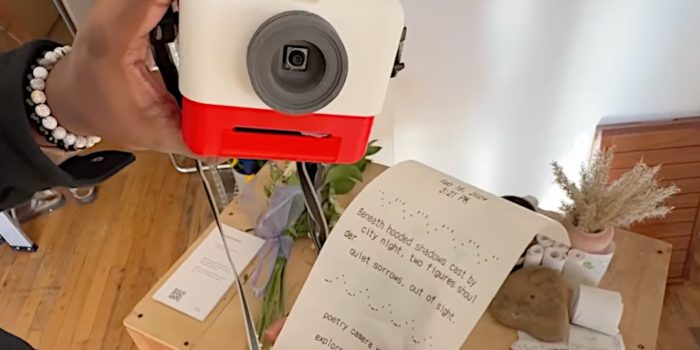The Poetry Camera is an incredible example of artificial intelligence (AI) innovation designed for writers and artists. This open-source project, created by Ryan Mather and Kelin Carolyn Zhang, offers an unconventional approach to turning visual imagery into poetic narrative by blending technology and artistic expression.
This device, which utilizes OpenAI’s GPT-4 model and is driven by a Raspberry Pi single-board computer, represents the fusion of artificial intelligence and hardware.

The Poetry Camera, which looks like a vintage Polaroid camera, breaks from the standard in photography by processing image data and turning it into moving poetry. The device uses Raspberry Pi’s processing power to extract fine details from photos taken, which the AI module then analyses. Colours, patterns, and nuanced emotional undertones are all included in this analysis, which leads to the generation of beautiful poems that capture the spirit of the picture.
For Zhang and Mather, the Poetry Camera represents a harmonious fusion of their passions for technology and the arts. Originating as a passion project, the device underwent iterative refinement, with Mather’s breakthrough access to the GPT-3 model propelling its development forward. Embracing feedback from peers and collaborators, the creators honed the prototype, shaping it into a highly anticipated innovation.

An emphasis on privacy and ephemeral artistry distinguishes the Poetry Camera from conventional imaging devices. By eschewing digital storage of images and poems, the creators imbue their creations with a sense of transient beauty and significance. This unique approach underscores their commitment to crafting a distinctive artistic experience.
With the growing interest in the Poetry Camera, Zhang and Mather had to make choices about how to proceed. Although the device was originally intended to be a personal project, its great praise motivates consideration of commercialization. The creators investigate opportunities for limited product releases, putting quality and sustainability ahead of mass manufacturing while juggling artistic integrity with consumer demand.


